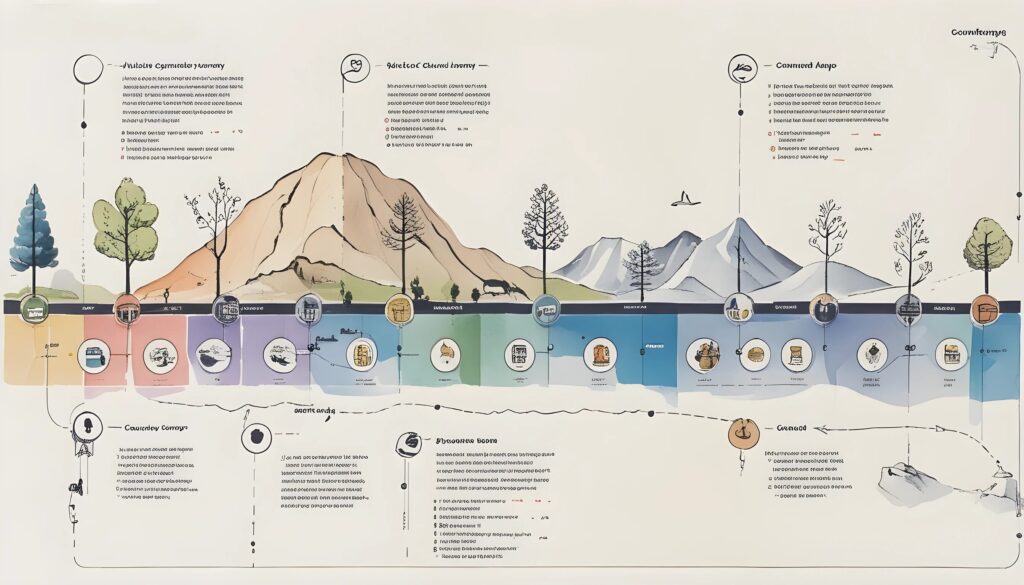Why Customer Journey Mapping Is Your Secret Weapon
Ever wonder why some brands have customers who practically beg to give them money while others struggle to keep the lights on? The secret isn’t magic—it’s customer journey mapping. If you’re still crossing your fingers and hoping customers will just “figure it out,” you’re playing a dangerous game. Understanding how customers interact with your brand is the difference between a seamless, satisfying experience and one that sends them running to your competitor.
What Is Customer Journey Mapping (And Why Should You Care)?
- Provides a bird’s-eye view of customer interactions with your brand.
- Pinpoints pain points that drive customers away.
- Enhances customer experience design for better engagement.
- Leverages data to improve customer journey at every step.
Think of customer journey mapping like a treasure map—except instead of gold, the reward is customer loyalty. By tracking every interaction from first click to post-purchase engagement, businesses can identify weak spots, optimize touchpoints, and create friction-free experiences. The brands that get this right don’t just sell products; they build relationships that keep customers coming back.
How to Create a Customer Journey Map in 6 Simple Steps
- Define your customer persona: Understand who you’re mapping for.
- Identify key touchpoints: Track every interaction customers have with your brand.
- Analyze customer emotions: Capture how they feel at each stage.
- Pinpoint the pain points: Recognize where frustrations arise.
- Implement solutions: Improve problem areas to enhance the experience.
- Validate and refine: Continuously test and optimize your map.
1. Define Your Customer Persona
Let’s be real—if you don’t know who your ideal customer is, you’re already in trouble. A customer journey map without a defined audience is like planning a road trip without a destination. Who are your customers? What do they need? What keeps them up at night? Create detailed personas with demographics, motivations, and pain points to ensure your map actually makes sense.
2. Identify Key Touchpoints
Customers interact with your brand in ways you probably don’t even realize. From scrolling your website to reading reviews, every touchpoint influences their journey. Identifying these moments helps you see where customers engage, drop off, or get frustrated. The more touchpoints you map, the clearer the journey becomes.
3. Analyze Customer Emotions
Every interaction sparks an emotion—delight, frustration, or indifference. If a checkout process leaves customers gritting their teeth, that’s a problem. Understanding emotional highs and lows helps you design a smoother, more enjoyable experience. Happy customers stay, annoyed customers leave—it’s that simple.
4. Pinpoint the Pain Points
If your website crashes faster than a toddler after a sugar rush, you’ve got a problem. Slow load times, confusing navigation, robotic support—these issues drive customers away. Mapping pain points allows you to fix what’s broken before customers abandon ship.
5. Implement Solutions
Identifying problems is one thing—fixing them is another. Use data-driven insights to enhance touchpoints, streamline processes, and remove friction. Whether that means revamping your website, improving customer support, or simplifying checkout, every change should make the journey smoother.
6. Validate and Refine
Think your customer journey map is flawless? Spoiler: It’s not. Customers evolve, technology changes, and what worked yesterday might fail tomorrow. Test your map, gather feedback, and continuously refine your approach to keep up with shifting customer expectations.
Why a Customer Journey Map Template Can Save Your Sanity
- Provides a structured framework for analysis.
- Speeds up the mapping process for efficiency.
- Ensures consistency across teams and departments.
Creating a customer journey map from scratch can feel overwhelming—enter the customer journey map template. These pre-designed frameworks help businesses organize insights, ensuring no critical touchpoints are overlooked. Instead of reinventing the wheel, leverage templates to streamline the process and stay focused on what truly matters: improving the customer experience.
The Impact of Customer Journey Mapping on Business Success
- Enhances customer experience design for better engagement.
- Boosts customer retention by reducing frustration.
- Aligns teams around customer needs and expectations.
Ignoring customer journey mapping is like ignoring a leaky roof and hoping it won’t rain. If you want customers to stick around, you need to understand their journey, eliminate roadblocks, and create an experience that feels effortless. Brands that master this art don’t just survive—they thrive.
Final Thoughts
Customer journey mapping isn’t just a trendy buzzword—it’s a business necessity. By taking the time to understand, refine, and optimize how customers interact with your brand, you set yourself up for long-term success. Whether you’re using a customer journey map template or building from scratch, the goal is the same: create an experience so seamless, customers won’t even consider going elsewhere. So grab that whiteboard, start mapping, and watch your customer loyalty skyrocket.
